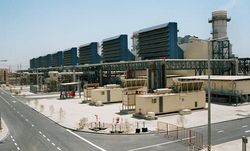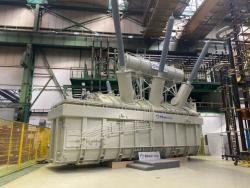
OR WAIT null SECS
© 2024 MJH Life Sciences™ and Turbomachinery Magazine. All rights reserved.
Q&A on 3D inverse design
Mehrdad Zangeneh, Ph.D., Professor of Thermofluids at University College London and Founding Director of Advanced Design Technology, discusses 3D inverse design in turbomachinery
.
Q: What are the limitations of conventional turbomachinery design methods?
The introduction of computational fluid dynamics (CFD) in the design process led to some significant improvement in performance, but further improvements are more difficult to achieve. The conventional design process, which is based on iterative changes to geometry, relies on the previous experience of designers and tends to encourage designers to stay within their comfort zone.
What are the challenges addressed by modern designers?
Design objectives in turbomachinery are contrasting in many ways. Consider aerodynamic efficiency and structural integrity. For example, a thinner blade can be more efficient but at the expenses of poorer structural performance. In principle, all turbomachinery applications share common challenges, whether one looks at multi-disciplinary problems, such as aerodynamic with mechanical performance, or noise and efficiency in fans and compressors, or good suction performance subject to minimum shut-off head and high efficiency at different operating points in pumps. Robust design optimization must also be considered, the aim being to make the design performances less dependent to operating changes. Automatic optimization can help find solutions to all of the above design challenges.
What are the main barriers to adoption of automatic optimization for industrial applications?
Automatic optimization we see today mainly as research projects within universities and rarely makes its way into industrial design. Optimization is used in 1D design and in some cases 2D (throughflow) design quite commonly in industry but application of 3D optimization of blade geometry has proved more difficult.
One challenge is the integration of all the steps into an automated process: from 3D geometry generation, to meshing for computational fluid dynamics (CFD) and finite element analysis (FEA) calculation, finally feeding back the CFD/FEA results to the optimizer. Streamlining this process can save time and reduce the number of user interventions. The key aspect is 3D geometry parameterization.
The method of geometry parametrization can be a limiting factor in using optimization under industrial conditions. Typically between 30 to 100 design parameters are needed to represent 3D blade geometry accurately. This has a direct influence on the type of optimization workflow available and the number of designs required to achieve valid results. Ultimately, it defines the product development time.
How does 3D geometry parameterization and number of input design parameters fit in with automatic optimization?
One geometry parameterized by just 30 parameters requires close to 1,000 designs to be evaluated just for the initial U.S. Department of Energy (DoE) database. Even with high computational capabilities, this is not something that allows for a design to be developed in a few weeks by most companies. In contrast, parameterization of the same geometry via 3D inverse design methods can be done with 6 to 10 parameters this means only 40 to 100 designs are needed, basically reducing the number of computations by factors of 10 to 20.
How is the blade geometry parameterized via 3D inverse design then?
Different approaches are used for the parametrization of blade geometry. In axial machines it is customary to use some of form of surface definition while in many radial and mixed flow applications the blade angle is generally used to control the camber distribution. This is done by using a number of control points between leading edge to trailing edge on 2D sections that are then stacked together to form a 3D geometry. In 3D inverse design, we parameterize the blade loading, or pressure jump across the blade. Our implementation is such that with 4 to 8 parameters of blade loading we can cover as much of design space as 30+ parameters required when using blade angles. This reduction in design parameters makes application of a surrogate model a practical reality for 3D design.
Are there additional benefits in using 3D inverse design?
Blade loading is common to all turbomachinery applications and it makes it easy to parameterize any type of blade for all turbomachinery applications and all components, such as axial, mixed-flow or centrifugal fans, pumps, compressors, turbines and torque converters, eliminating the need for different geometry parameterization systems.
Another difficulty in optimization is the choice of a correct range of variation of design parameters. Ideally you want them as widely varied as possible to cover a large part of the design space but at the same time avoid unrealistic designs.
By looking at blade loading it is easy to see the correct range as unrealistic cases, such as negative loading in compressors, for example, can be seen visually and the appropriate level chosen accordingly. Another major benefit is that the optimum blade loading for a given flow phenomena seems to have generality and is independent of say flow rate or diameter of the machine. So optimization can be used as a know-how generator.



